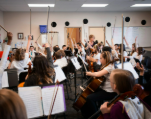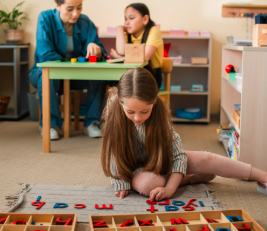A strong classroom community is the heart of any successful early learning environment. When children feel connected, safe, and valued, they are more likely to participate, express themselves, and thrive. One joyful and effective way to foster this sense of belonging is through music—especially songs that bring children together in shared experiences.
The Power of Music in Early Learning
Music naturally engages young children. Its rhythms, melodies, and patterns support memory, language development, and emotional expression. Songs help children transition between activities, understand classroom routines, and feel calm or energized when needed. But beyond the practical benefits, music has the unique power to unite children in a joyful and inclusive way.
Songs That Welcome and Include
Morning welcome songs, name songs, and circle-time chants allow every child to feel seen and appreciated. Singing each child’s name during a greeting song, for example, helps build familiarity and recognition among classmates. This encourages children to use each other’s names, make eye contact, and feel that they belong to a group.
Encouraging Participation and Teamwork
Group songs that include movement, call-and-response, or hand motions invite participation from all children, regardless of language ability or learning style. Songs like “If You’re Happy and You Know It” or “The More We Get Together” promote cooperation and social interaction in a way that feels fun and non-intimidating.
Celebrating Diversity Through Music
Including songs from various cultures and languages can help children feel proud of their heritage and become more curious and respectful toward others. Educators might invite families to share songs from home or teach simple songs in different languages. This practice supports cultural appreciation and fosters a more inclusive classroom community.
Supporting Emotional Learning
Songs about emotions, friendship, and kindness help children understand how to relate to others. Singing about helping, sharing, or solving problems together lays the groundwork for empathy and social understanding. For example, songs like “This Is How We Say Hello” or “I Can Be a Good Friend” reinforce positive behavior through repetition and storytelling.
Conclusion
Music is more than entertainment—it’s a bridge that connects young learners. When used intentionally, songs can create a warm, welcoming, and respectful classroom atmosphere where every child feels part of something special. By making music a regular part of classroom life, educators can nurture a true sense of community, one joyful note at a time.


